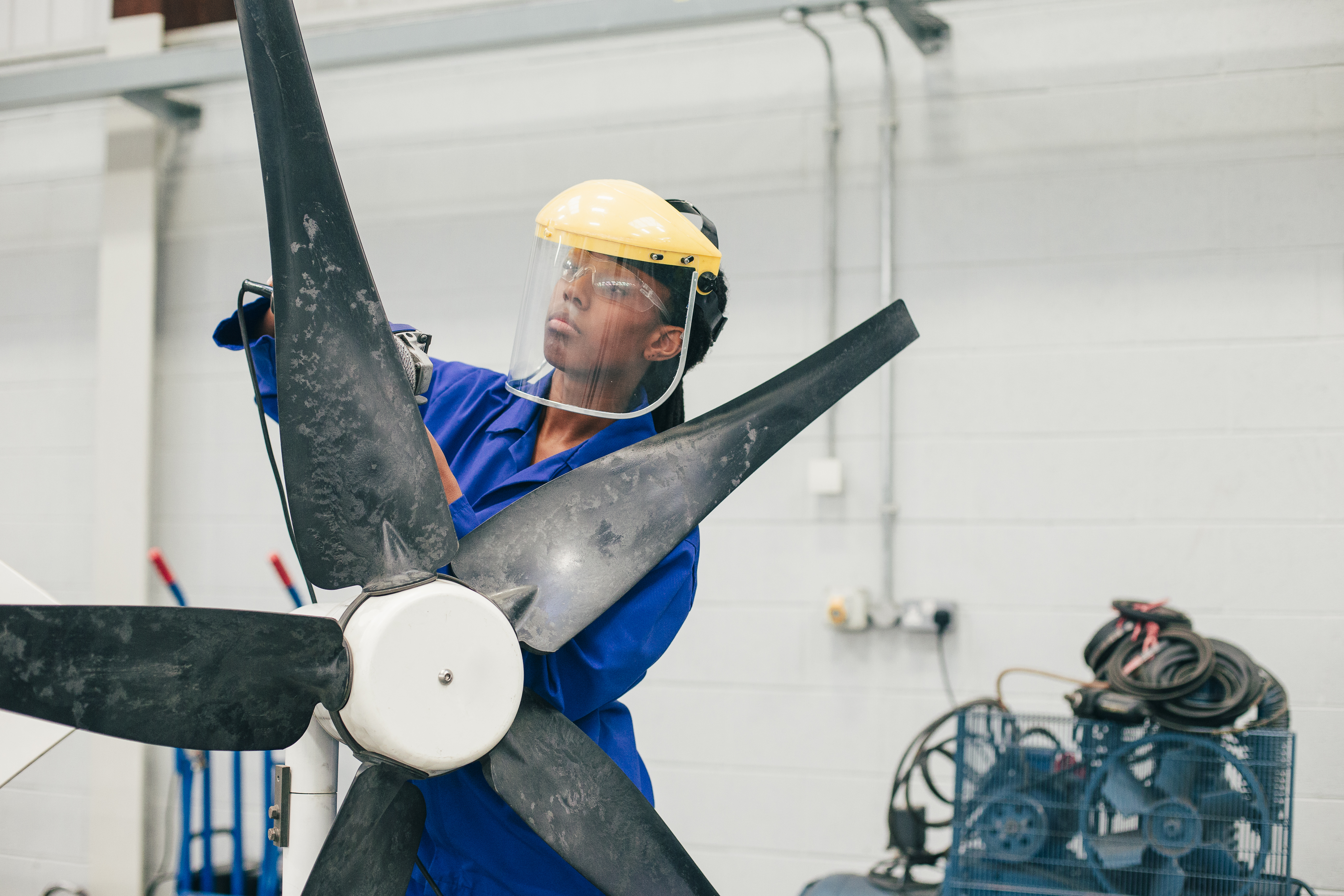Mobilizing trillions to build a just, thriving economy

Click here to see a pdf of our NIA factsheet.
To see what we value, look at where we spend our money. We invest in what we hold dear.
What do we hold dear as a society? Do we value a future free of the stress and injustices of sickness, unemployment, climate crisis, and racial, gender, and economic inequity? If so, we need to rethink how our government uses its massive investment capacity. We cannot afford to keep investing in the unjust status quo while only tiny pockets of money go to the transformational changes we seek.
We need a new National Investment Agency (NIA) to mobilize trillions of dollars to tackle our overlapping crises and build an economy where our communities can thrive. We need a coherent strategy to channel investments—at the speed and scale that justice demands—to redress inequities by ensuring family-sustaining jobs, climate stability, and healthy communities for all.

The Challenge
We live in the wealthiest country in the world. If wealth and income were evenly distributed, each worker in the US would have $692,000 in savings and an annual income of $131,000. And yet our economic system has dramatically failed to allocate resources where they are most needed, resulting in the coexistence of vast and deep deprivation. Hundreds of billionaires live in the same country as 38 million poor people, where millions of workers go without work, 37 million people go hungry, and half a million go without shelter each night.
The hurricanes and wildfires ravaging our communities offer further evidence of a systemic misallocation of investments—toward an extractive economy that rewards short-term profit over long-term value. This misdirected money is fueling the climate crisis and the reality that 141 million people in the US breathe unsafe air while 2 million lack access to safe drinking water.
While economic and environmental catastrophes impact many, Black, Brown, Indigenous, and poor white communities—particularly women—bear the brunt of these interlocking crises due to persistent racism, patriarchy, and classism. Without a clear investment strategy rooted in justice, the flow of capital has tended to reinforce such systemic inequities rather than counteract them.
To reverse long-standing inequities and move money to the right priorities, we need institutional change. Today, the US government lacks an institutional home for democratically crafting a coherent, long-term strategy for investing in equitable and sustainable economic development. This institutional gap leaves public investment decisions to be made on the short timeframe and small scale of a congressional appropriations cycle. The resulting investment programs are scattered in silos across federal agencies, often invisible and inaccessible to the people they are meant to serve. The absence of a clear, long-term public investment strategy also makes it difficult to lure private capital away from counterproductive investments, like real estate speculation and polluting industries, and toward broadly shared objectives, like clean, affordable renewable energy.
To meet these challenges, movement leaders and scholars are crafting a solution: a new National Investment Agency capable of achieving an investment strategy with the scale, coherence, and long-term vision needed to address pressing economic, environmental, and social crises while delivering real and lasting value—not merely short-term profits.
The Solution
Movement actors have long led the way in naming national investment priorities that could serve as the basis for a national plan for economic renewal. Building on those efforts, over 250 of the nation’s largest union, racial justice, climate, and other grassroots groups recently joined forces with over 100 members of Congress to launch a congressional resolution called the THRIVE Agenda: a bold and cohesive economic renewal plan backed by a movement of movements and a strong majority of voters. The plan would put 16 million people back to work on projects that would simultaneously slash pollution and build climate resilience, with priority benefits for Black, Brown, Indigenous, and low-income communities. Together, these investments form an institutional blueprint for investing in racial, economic, and environmental justice.
Movement groups know that existing institutions are not up to the task of turning this blueprint into a reality. That’s why THRIVE also calls for the creation of new public institutions to “strategically and coherently mobilize and channel investments… at the scale and pace that these times require.” The NIA can help to answer this call. But to realize the power shift envisioned by social movements, it must meet three crucial requirements:
1. An equitable mandate. The legally binding, long-term goals of the NIA should be shaped by leaders of communities impacted by chronic underinvestment, including unions, Indigenous groups, and racial and environmental justice organizations. With firsthand authority on our most glaring investment needs, they are well-positioned to identify institutional goals to tackle poverty, unemployment, climate change, toxic pollution, and racial, economic, and gender inequity.
2. Equitable decision-making power. Representatives of impacted communities must constitute a large majority of the NIA’s governing board. This is essential to get the investment priorities right. There may be a thousand interpretations of the specific investments needed to achieve goals like “eliminating toxic pollution,” but the one that matters most comes from those suffering from asthma, cancer, and lead poisoning caused by such pollution. While impacted stakeholders are often relegated to advisory committees with no teeth, such tokenizing risks ceding the real power to Wall Street executives who are qualified to reinforce the economic status quo, not deliver economic renewal. If a national institution is to reverse long-standing inequities, so must its governing body.
3. Clear labor, environmental, and equity criteria. Funds channeled through the NIA should come with labor, environmental, and equity conditions defined by movement actors. Unions have long advocated for prevailing wage floors, neutrality toward collective bargaining, worker safety rules, “Buy American,” and other labor standards that should govern new investments to build worker power, curb outsourcing, and secure family-supporting wages. Similarly, environmental standards advanced by climate and environmental justice groups, such as “Buy Clean,” should be applied to cut emissions and help communities shield themselves from climate disasters. Investments also should conform to equity standards generated by racial, gender, and economic justice groups. The THRIVE Agenda, for example, calls for directing “at least 40 percent of investments to communities that have been excluded, oppressed, and harmed by racist and unjust practices.”
Winning an NIA that embodies these features will be a turning point in our movements’ efforts to invest in what really matters—an economy that fosters justice, not crisis.
Learn More
On December 2nd 2020, Sierra Club's Living Economy Team hosted a webinar to give background and context on the proposal for a National Investment Agency. You can watch the recording of the full webinar below.
